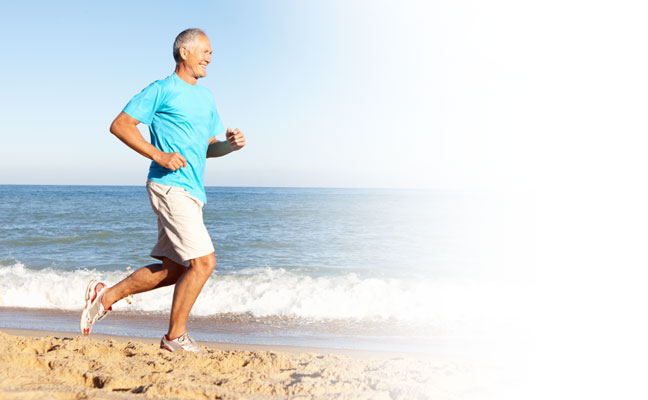URINARY INCONTINENCE
INCONTINENCE/OVERACTIVE BLADDER
Urinary incontinence is a very common problem affecting as many as 13 million people in the United States. Many of these people suffer in silence unnecessarily, since incontinence can be managed or treated. Discuss this condition with your urologist to find out what treatments are available to you.
WHAT IS URINARY INCONTINENCE?
Urinary incontinence is the involuntary loss of urine and is not necessarily a part of aging. It is a common condition experienced by men and women of all ages.
WHAT ARE THE DIFFERENT TYPES OF URINARY INCONTINENCE?
STRESS URINARY INCONTINENCE:
Stress incontinence is leakage that occurs when there is an increase in abdominal pressure caused by physical activities like coughing, laughing, sneezing, lifting, straining, getting out of a chair or bending over. The major risk factor for stress incontinence is damage to pelvic muscles that may occur during pregnancy and childbirth.

URGE URINARY INCONTINENCE:
Also referred to as “overactive bladder,” this type of incontinence is usually accompanied by a sudden, strong urge to urinate and an inability to get to the toilet fast enough. Frequently, some patients with urge incontinence may leak urine with no warning. Risk factors for urge incontinence include aging, obstruction of urine flow, inconsistent emptying of the bladder and a diet high in bladder irritants (such as coffee, tea, colas, chocolate and acidic fruit juices).
MIXED URINARY INCONTINENCE:
Mixed incontinence is a combination of urge and stress incontinence.
OVERFLOW URINARY INCONTINENCE:
Overflow incontinence occurs when the bladder does not empty properly and the amount of urine produced exceeds the capacity of the bladder. It is characterized by frequent urination and dribbling. Poor bladder emptying occurs if there is an obstruction to flow or if the bladder muscle cannot contract effectively.

WHAT IS MINIMALLY INVASIVE MANAGEMENT OF URINARY INCONTINENCE?
Some of the causes of incontinence are temporary and easily reversible. Reversible causes include urinary tract infection, vaginal infection or irritation, medication, constipation and restricted mobility. However, in some cases, further medical intervention is necessary. Minimally invasive treatment options are those treatments that do not involve surgery and should be the first line of treatment for patients. However, they may also be used in conjunction with surgical therapy.
FLUID MANAGEMENT:
This option consists of instructing a patient to increase or reduce their fluid intake. Incontinent patients may need to reduce the amount of caffeine or other dietary irritants (such as acidic fruit juices, colas, coffee and tea), while at the same time increase water intake to produce an adequate amount of non-irritating, non-concentrated urine. A recommended water intake is six to eight glasses per day.
BLADDER TRAINING:
A diary is the starting point for bladder training. Patients are instructed to record fluid intake, urination times and when their urinary accidents occur. The diary allows the patient to see how often they actually urinate and when incontinence occurs. The diary is also used to set time intervals for urination. Patients who urinate infrequently are instructed to do “timed urination” where they urinate by the clock every one to two hours during waking hours. By achieving regular bladder emptying they should have fewer incontinent episodes. Timed urination may be effective in patients with both urge and stress incontinence.
BLADDER RETRAINING:
Bladder retraining is used for patients with urinary frequency. The goal of retraining is to increase the amount of urine that the patient can hold within their bladder. Patients are instructed to keep a diary to determine their urination interval. Patients are then instructed to gradually increase their urination interval by 15 to 30 minutes per week. The goal is to have patients urinating every two to four hours while awake with less urgency and less incontinence.
PELVIC FLOOR EXERCISES:
Also known as Kegel exercises, this type of minimally invasive treatment focuses on strengthening the external sphincter muscle and the pelvic muscles. Patients who are able to contract and relax their pelvic floor muscles can improve their strength by doing the exercises regularly. Other patients require help from a health-care professional to learn how to contract those muscles. Biofeedback and electrical stimulation can be used to aid patients in doing pelvic floor exercises. During electrical stimulation, a small amount of stimulation from a sensor placed in the vagina or rectum is delivered to the muscles of the pelvic floor. Like any exercise program, the patient must continue to do the exercises to maintain the benefit. Patients with stress incontinence benefit from pelvic floor exercises by increasing resistance at the urethra and by increasing the strength of the voluntary pelvic floor muscles. Patients can also be taught to compensate by contracting the pelvic muscles with certain activities like coughing.
Pelvic floor muscle exercises are effective for urge incontinence, since a contraction of the pelvic floor can interrupt a contraction of the bladder smooth muscle and stop or delay an accident.

MEDICINAL TREATMENT:
Stress incontinence may be treated with drugs that tighten the bladder neck, such as pseudoephedrine or imipramine. Just as pseudoephedrine causes constriction of the blood vessels in the nose, it also causes the muscles at the bladder neck to contract. Because of its effect on the smooth muscle in blood vessels, it should not be used in patients with a history of hypertension. Imipramine is a tricyclic antidepressant. In addition to causing the bladder muscle to relax, it also causes the smooth muscles at the bladder neck to contract. Urge incontinence is also treated with drugs that have anticholinergic properties. Anticholinergics allow for relaxation of the bladder smooth muscle. A commonly used anticholinergic is oxybutynin chloride. This drug works well to treat urge incontinence but has side effects including dry mouth, confusion, constipation, blurred vision and an inability to urinate. New drugs or new formulations of older drugs have been developed in an effort to reduce side effects. Oxybutynin is now formulated in a slow-release tablet taken once daily. The slow release of this new drug allows for a steady level of the drug and fewer side effects. Tolterodine tartrate is another new anticholinergic that is different than the older ones in that it has less effect on the salivary glands and therefore causes less dry mouth. It is also available in a slow-release, one-a-day form. Postmenopausal women with incontinence may benefit from hormone treatment. Normally the bladder neck and the urethra are closed at rest. With loss of estrogen, the tissues become weakened or dried and normal closure is lost. Hormone replacement improves the health of these tissues and allows for closure to be regained through increased tone and improved blood supply.
WHAT CAN BE EXPECTED FROM MINIMALLY INVASIVE TREATMENT FOR URINARY INCONTINENCE?
Minimally invasive therapies can lead to improvement in incontinence but not necessarily a cure. Improvement generally does not occur overnight. Patients need time to adapt to behavioral changes. Results with pelvic floor exercises may take three to six months. Some patients may notice an immediate effect with medical therapy, whereas in others an effect may not be seen for approximately four weeks. Incontinence may also recur after treatment. Continuing behavioral techniques or continuing or resuming pharmacologic treatment as well as practicing preventive strategies may prevent such recurrence. Incontinence may also be prevented by good toileting habits including regular urination, pelvic floor exercises, avoidance of constipation, avoidance of bladder irritants and adequate water intake.
FREQUENTLY ASKED QUESTIONS
Yes, there are several types of incontinence. The most common is called stress incontinence where a person leaks urine when they increase the pressure in their abdomen (coughing, sneezing, or lifting their children or grandchildren)
After a careful history and physical examination, a test called a cystoscopy is done to evaluate the urethra and bladder. This is usually performed with a special instrument to check the pressure of the bladder under different circumstances (Urodynamic studies and Uroflow)
The first step is behavioral modification (drinking less caffeine, using the bathroom more frequently, etc.)
If and when this fails and the symptoms are not corrected with medications, there are two common surgical repairs.
The first is an artificial urinary sphincter or AUS. This is where an inflatable cuff is placed around the urethra (tube through which a patient urinates) and the patient activates a small pump in the scrotum when they feel the desire to urinate.
The second is a minimally invasive option. This is called a bulbourethral sling or suburethral sling. Also called the “Male Sling”
In this procedure a piece of soft mesh is placed beneath the urethra and used for support. There are no devices to activate.
Yes, the majority of insurances and Medicare currently cover these procedures.
Usually a period of 4 to 8 weeks of no heavy lifting is required.
There is some bruising and swelling, but usually oral pain medications and scrotal support are more than enough to keep the patient comfortable.
General or regional (spinal) anesthesia are used.
